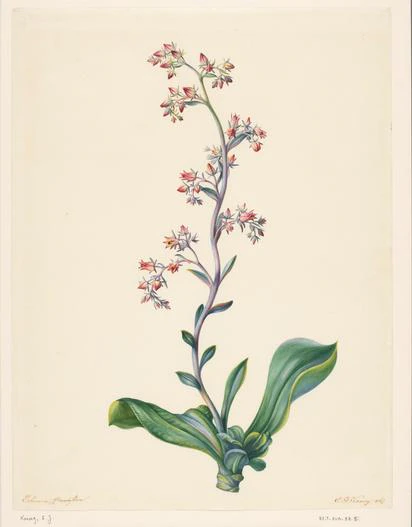Mexican Snow Ball
(Echeveria grandiflora)
Mexican Snow Ball (Echeveria grandiflora)
/
/

Rijksmuseum
CC0
Image By:
Rijksmuseum
Recorded By:
Copyright:
CC0
Copyright Notice:
Photo by: Rijksmuseum | License Type: CC0 | License URL: http://creativecommons.org/publicdomain/zero/1.0/deed.en | Uploader: Mr.Nostalgic | Publisher: Wikipedia Commons

Estimated Native Range
Climate Requirements for Chigasaki, Japan
| This Plant | Your Site | Plant Suitability for Your Location | ||
|---|---|---|---|---|
| • Precipitation | 6" - 45" | 67" | Aquatic | Aquatic |
| • High Temp. | 73°F - 97°F | 87°F | Your summer temperatures are normal for this plant. | Excellent |
| • Low Temp. | 10°F - 43°F | 34°F | Your winter temperatures are normal for this plant | Excellent |
This plant should grow very well at your location without additional irrigation.
Summary
Echeveria grandiflora, commonly known as Mexican Snow Ball, is an evergreen succulent native to semi-desert regions and rocky outcrops in Mexico. It typically forms rosettes reaching a height of 0.5-0.7 feet (0.2-0.2 meters) and a width of 0.2-0.4 feet (0.06-0.1 meters). The fleshy, spoon-shaped leaves are pale green to silvery-white, often with a pinkish tinge at the edges, giving the plant a distinctive, frosted appearance. Echeveria grandiflora blooms with coral to pinkish-purple flowers on tall stalks that rise above the foliage in spring and summer, attracting pollinators such as bees and hummingbirds.
This succulent is favored for its low maintenance requirements and its ability to withstand drought. It is ideal for rock gardens, container plantings, and as ground cover in xeriscaped landscapes. The Mexican Snow Ball thrives in full sun to partial shade and prefers well-draining soil. Overwatering can lead to root rot, so it is important to allow the soil to dry out between waterings. While it is generally pest-resistant, mealybugs and aphids can sometimes be a problem. Echeveria grandiflora is not frost-tolerant and should be protected from freezing temperatures.CC BY-SA 4.0
This succulent is favored for its low maintenance requirements and its ability to withstand drought. It is ideal for rock gardens, container plantings, and as ground cover in xeriscaped landscapes. The Mexican Snow Ball thrives in full sun to partial shade and prefers well-draining soil. Overwatering can lead to root rot, so it is important to allow the soil to dry out between waterings. While it is generally pest-resistant, mealybugs and aphids can sometimes be a problem. Echeveria grandiflora is not frost-tolerant and should be protected from freezing temperatures.CC BY-SA 4.0
Plant Description
- Plant Type: Succulent
- Height: 0.5-0.7 feet
- Width: 0.2-0.4 feet
- Growth Rate: Slow
- Flower Color: Purple
- Flowering Season: Spring, Summer, Fall
- Leaf Retention: Evergreen
Growth Requirements
- Sun: Full Sun
- Water: Very Low, Low
- Drainage: Fast
Common Uses
Bird Garden, Butterfly Garden, Drought Tolerant, Fire Resistant, Hummingbird Garden, Low Maintenance, Potted Plant, Rock Garden, Showy Flowers
Natural Habitat
Semi-desert regions and rocky outcrops in Mexico
Other Names
Common Names:
Scientific Names: Echeveria grandiflora
GBIF Accepted Name: Echeveria grandiflora Haw.